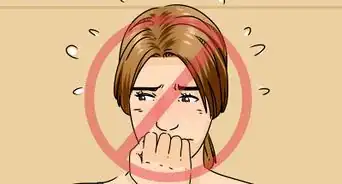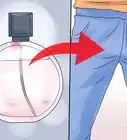This article was co-authored by Chris M. Matsko, MD and by wikiHow staff writer, Janice Tieperman. Dr. Chris M. Matsko is a retired physician based in Pittsburgh, Pennsylvania. With over 25 years of medical research experience, Dr. Matsko was awarded the Pittsburgh Cornell University Leadership Award for Excellence. He holds a BS in Nutritional Science from Cornell University and an MD from the Temple University School of Medicine in 2007. Dr. Matsko earned a Research Writing Certification from the American Medical Writers Association (AMWA) in 2016 and a Medical Writing & Editing Certification from the University of Chicago in 2017.
There are 11 references cited in this article, which can be found at the bottom of the page.
This article has been viewed 2,378,595 times.
Ugh… it’s time for the dreaded pee-in-a-cup test. But now that you’re stuck in the bathroom, it’s like your urge to pee has totally vanished into thin air. What gives? Peeing on command for a medical or drug test can seem daunting, but it’s not nearly as hard as it seems—and we’re here to help you get started. Read on for all the tips and hacks you need to flush your worries away and submit your urine sample in no time.
Things You Should Know
- Turn on the faucet and/or dip your fingers in a little water to kickstart your urge to pee.
- Lean forward, pretend you’re passing a bowel movement, or tighten and relax your muscle groups progressively while you're on the toilet.
- Walk around for a little bit and see if that triggers your need to pee.
- Drink plenty of water before you have to collect your urine sample. It may also help to eat and drink some natural diuretics, like watermelon, cucumbers, tea, and coffee.
Steps
Quick Solutions
-
1Switch on the bathroom faucet. As soon as you enter the bathroom, turn on the faucet before you sit on the toilet. Some people believe that your body is programmed to urinate whenever you hear the sound of trickling water. Others believe that the soothing rush of running water helps switch on your parasympathetic nervous system, which in turn allows your bladder muscles to relax. In any case, a little background noise could be exactly what you need to get that plastic cup filled up.[1]
- When you’re stuck on the road with no rest stop in sight, the last thing you want to hear is the sound of trickling water. By that logic, a little running water could be just what you need when you’re stuck in the bathroom.
-
2Dip your fingers in cool water. As soon as you enter the bathroom, switch on the faucet to the “cold” setting and stick your fingers under the cool water. Then, head to the toilet—the sensation of water on your skin might make you want to pee.[2]Advertisement
-
3Breathe in the scent of peppermint oil. Before you get ready to use the restroom, squeeze a couple of peppermint oil drops onto a cotton ball and breathe in the scent. If you don’t have cotton balls on hand, that’s fine too—just squeeze a couple of drops directly into the toilet water and breathe in the scent that way.[3]
- Research shows that peppermint oil may help if you’re struggling to pee.[4]
-
4Clean your perineum (the skin between your genitals and anus). Fill a peri-bottle (a plastic bottle with an L-shaped spout) with warm water. Then, carefully spray your perineum with a few squirts of water. A quick rinse might help get the urine flowing if you’re feeling blocked.[5]
Simple Exercises
-
1Lean forward. After you seat yourself on the toilet, try leaning your upper body forward just a little bit—this helps relax your pelvic floor muscles, which makes it easier to pee. After you adjust yourself, you might have a simpler time forcing yourself to urinate.[6]
- If you’re using a public toilet, put down a paper seat cover or a few strips of toilet paper before you sit down.
-
2Pretend that you’re pushing out a bowel movement. Also known as the Valsalva maneuver, this exercise creates extra pressure around your bladder and abdomen, which helps you void waste (like urine). All you have to do is get in position and wait.[7]
-
3Drum your fingers over your bladder. Rest your hand on your lower abdomen so it’s right on top of your bladder. Using either your fingertips or the back edge of your hand, gently tap on your bladder—this simple exercise might stimulate your urge to go.[8]
-
4Try progressive muscle relaxation. During a session of PMR, focus on tightening a specific group of muscles for 5 seconds before relaxing them for another 10 seconds. Starting with your arms and upper body, slowly make your way down to your chest, abdomen, and legs.[9] Tightening and relaxing your bladder muscles could make it a lot easier to pee.
- Do a sequence of PMR in this order: right hand and forearm; right upper arm; left hand and forearm; left upper arm; forehead; eyes and cheeks; mouth and jaw; neck; shoulders; back and shoulder blades; chest and stomach; butt and hips; right upper leg; right lower leg; right foot; left upper leg; left lower leg; and left foot.
-
5Get up and move around. If nothing seems to be working, step out of the bathroom and go for a quick walk. An easy stroll down the hall (or even a quick pace in the bathroom) could help jumpstart your bladder.[10]
- If you’re at a medical facility, ask a staff member if you can step out of the bathroom for a few minutes and take a quick walk.
Lifestyle Remedies
-
1Drink plenty of water. Aim to drink the recommended amount of water each day—for men, it’s 15.5 cups (3.7 L); for women, it’s 11.5 cups (2.7 L).[11] Make sure that you’re drinking plenty of water right before your urine test as well so you’re ready to go as soon as you enter the bathroom. After all, the more you drink, the more you’ll have to pee!
-
2Eat and drink natural diuretics. Diuretics expel water from your body and make you need to urinate more—so, around the day of your urine test, stock up on fruits and veggies like lemons, onions, garlic, watermelon, cucumbers, asparagus, pineapple, and grapes. Since caffeinated beverages like coffee and tea are also diuretics, feel free to gulp down a mug of your favorite hot (or iced) drink before you head to the bathroom.[14]
- Certain herbs (like dandelion and parsley) are diuretics, but there isn’t a lot of research on them. Always talk to your doctor before adding any herbal supplements to your diet.
-
3Meet with your doctor if you're having trouble urinating. During your appointment, your doctor might perform a bladder scan and order other medical tests to pinpoint the cause of your urinary retention.[15] Some common causes are:
- Constipation
- UTIs
- Enlarged prostate
- Neurological issues (caused by conditions like diabetes, MS, a recent birth, etc.)
- Your doctor will provide specific treatment advice once they've identified the cause of your urinary retention.
References
- ↑ https://www.sciencefocus.com/the-human-body/why-does-running-water-make-me-need-the-toilet/
- ↑ https://www.med.umich.edu/1libr/Gyn/BirthCenterPostpartum/BladderAfterOutpatientSurgery.pdf
- ↑ https://www.med.umich.edu/1libr/Gyn/BirthCenterPostpartum/BladderAfterOutpatientSurgery.pdf
- ↑ https://kuscholarworks.ku.edu/handle/1808/27708
- ↑ https://www.med.umich.edu/1libr/Gyn/BirthCenterPostpartum/BladderAfterOutpatientSurgery.pdf
- ↑ https://health.clevelandclinic.org/why-is-it-hard-for-some-women-to-empty-their-bladders/
- ↑ https://sci.washington.edu/info/pamphlets/bladder_manage.pdf
- ↑ https://sci.washington.edu/info/pamphlets/bladder_manage.pdf
- ↑ https://www.cci.health.wa.gov.au/-/media/CCI/Mental-Health-Professionals/Panic/Panic---Information-Sheets/Panic-Information-Sheet---05---Progressive-Muscle-Relaxation.pdf
- ↑ https://www.med.umich.edu/1libr/Gyn/BirthCenterPostpartum/BladderAfterOutpatientSurgery.pdf
- ↑ https://www.mayoclinic.org/healthy-lifestyle/nutrition-and-healthy-eating/in-depth/water/art-20044256
- ↑ https://health.clevelandclinic.org/dehydrated-these-7-foods-will-satisfy-your-thirst-and-hunger/
- ↑ https://medlineplus.gov/ency/patientinstructions/000112.htm
- ↑ https://health.clevelandclinic.org/natural-diuretics/
- ↑ https://www.healthdirect.gov.au/urinary-retention#doctor
About This Article
To make yourself pee, try sitting down and leaning forward, which will put pressure on your abdominal muscles and bladder. While you’re sitting down, lay your forearm across your lower abdomen and press gently to increase the pressure. You can also try using your phone or reciting the lyrics to your favorite song in your head, which will help you relax and make it easier to go. If you're struggling to pee because you're stressed or distracted, try exhaling, then holding your breath, which should help reduce any anxiety you have about peeing. For more tips from our Medical co-author, including how to use food and liquids to help you pee, read on!
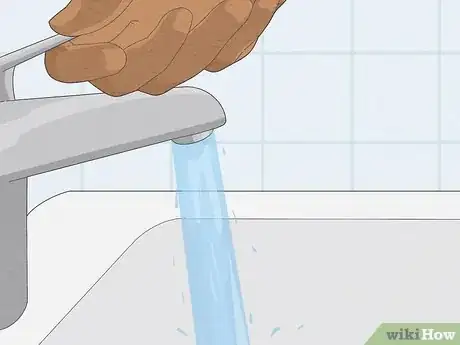
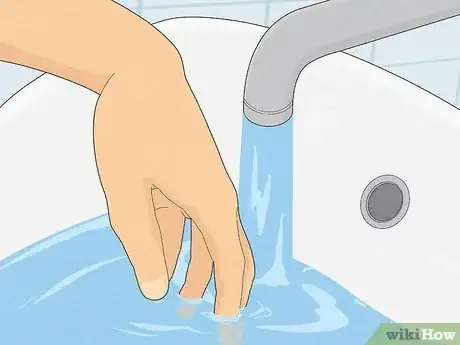
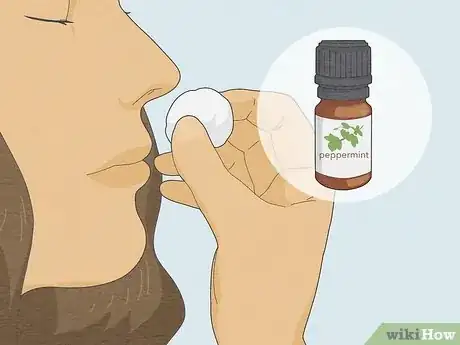
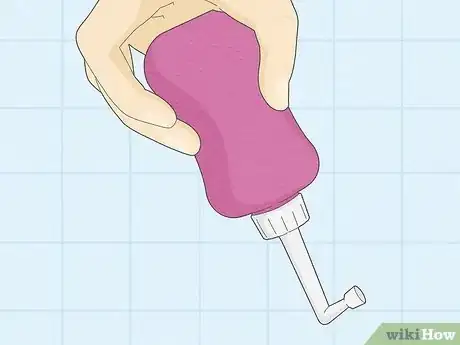

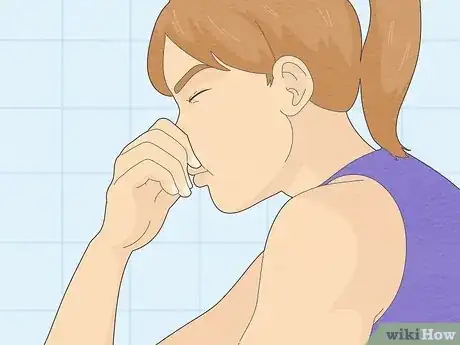


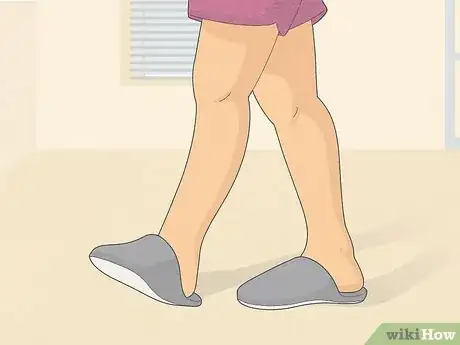
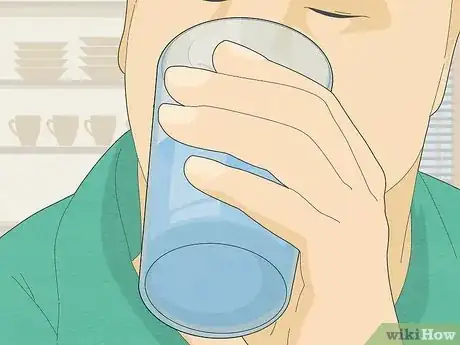
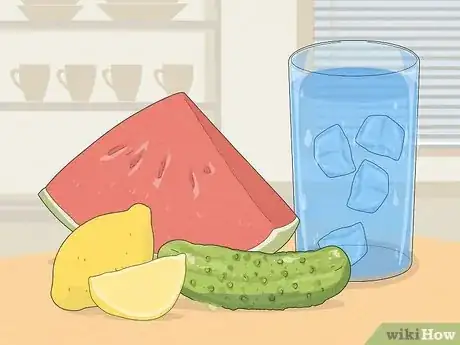
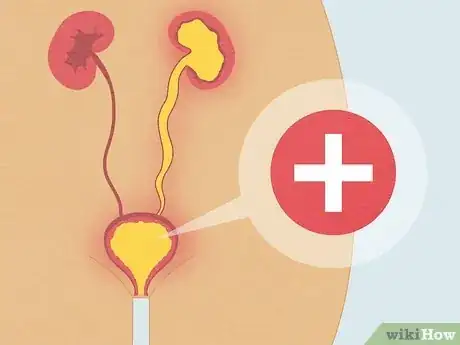

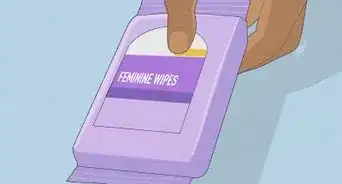
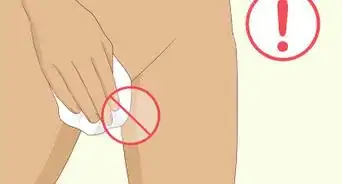



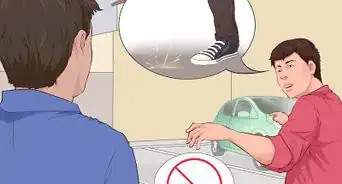


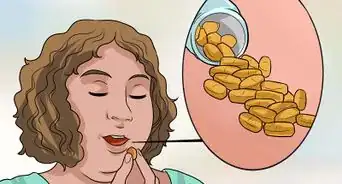
-Step-6.webp)

